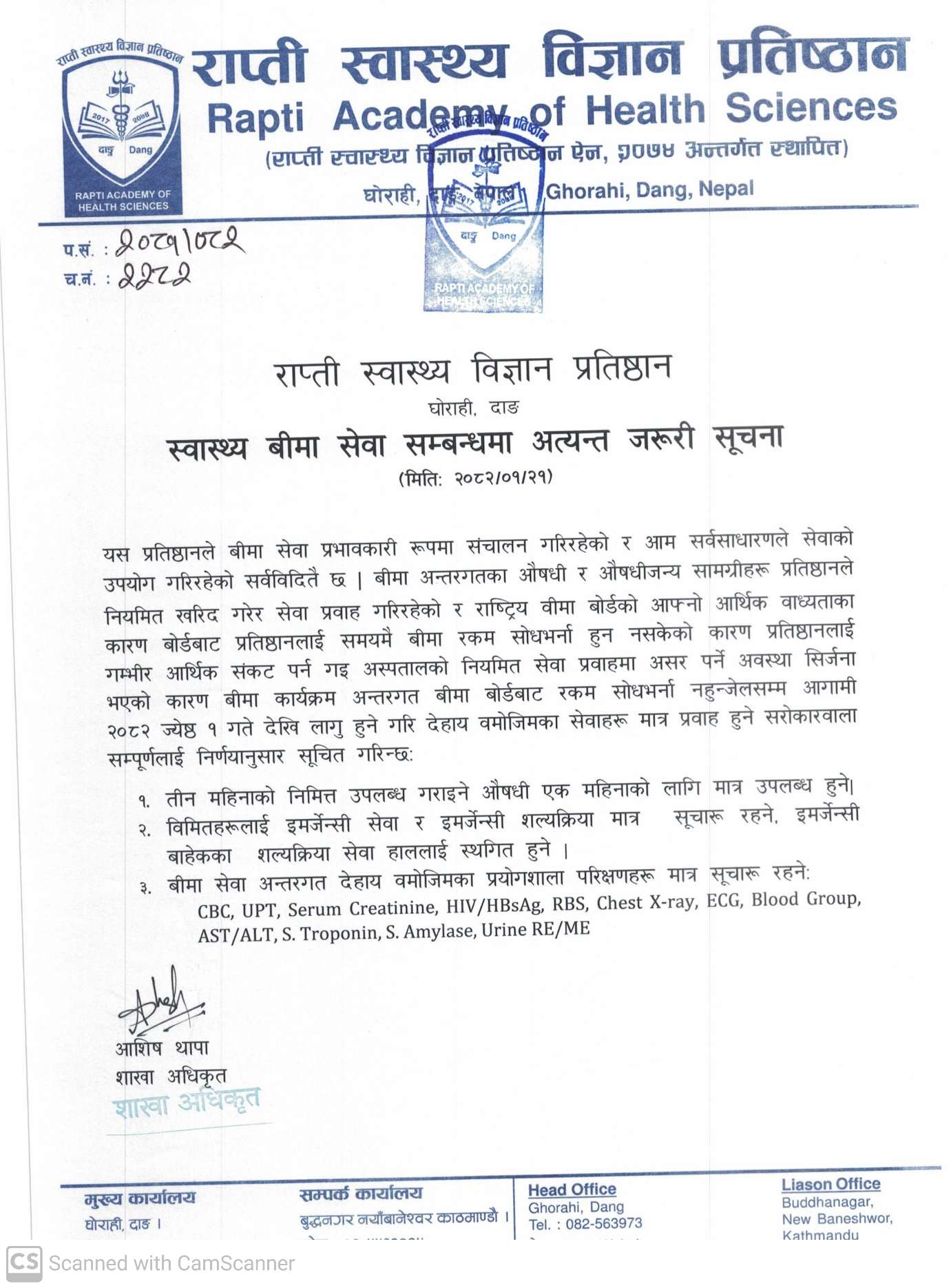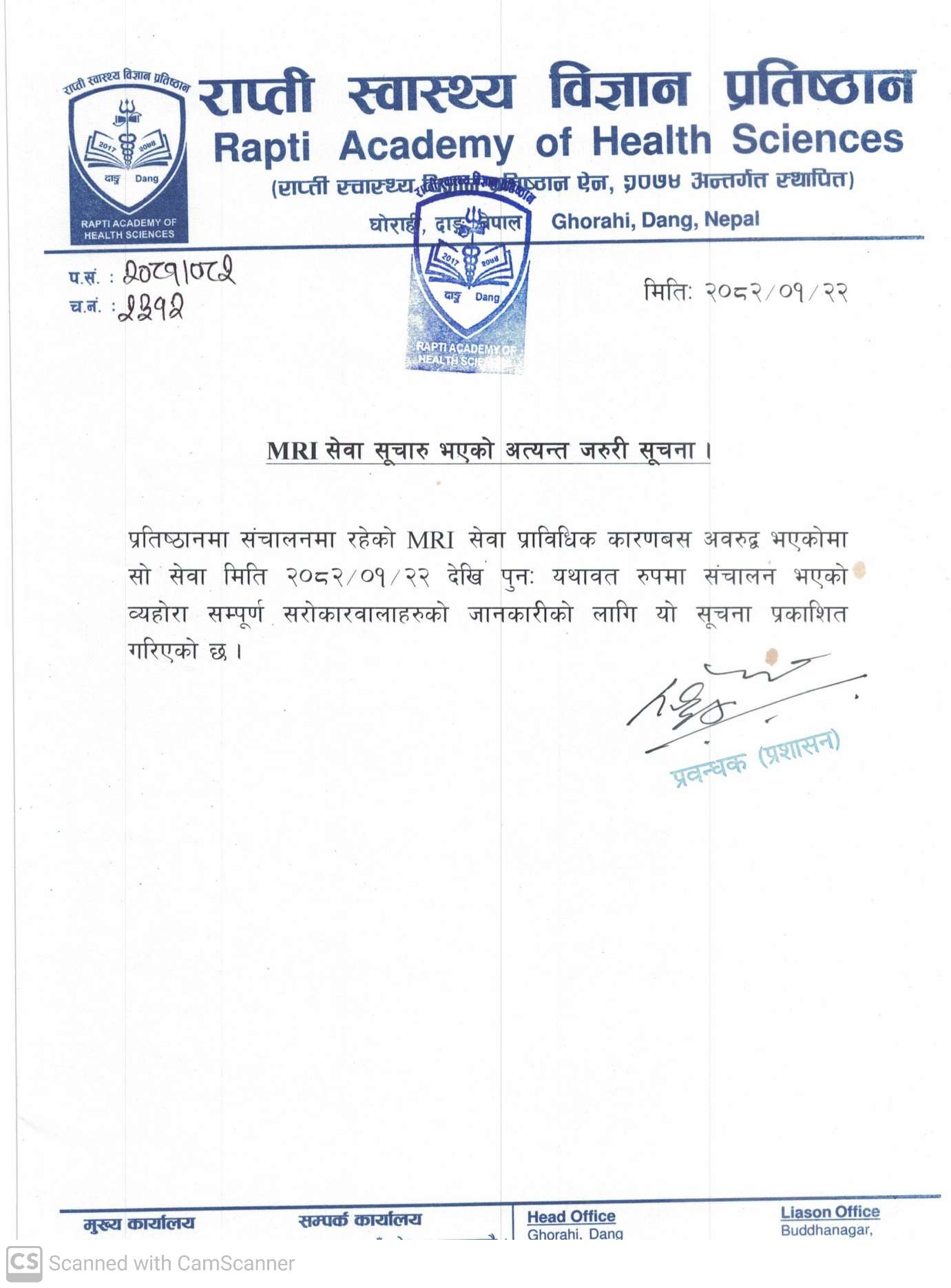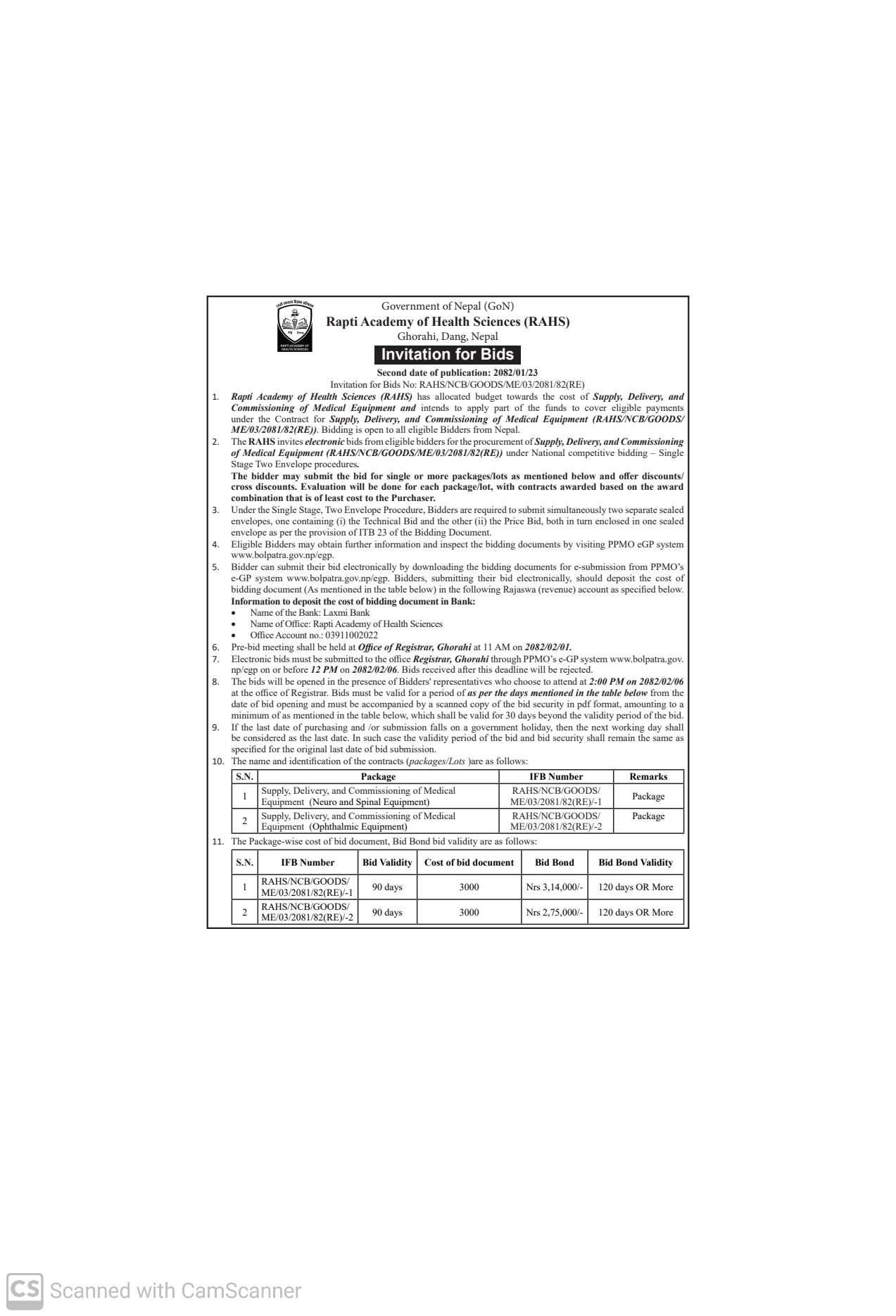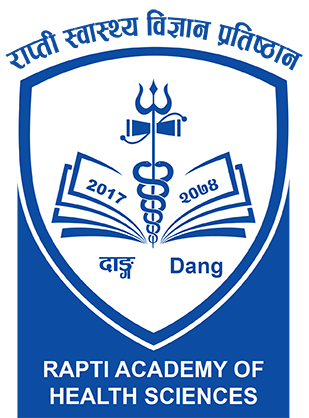Introduction
Rapti Academy of Health Sciences (RAHS) is an autonomous institution committed to excellence in medical, education and research. The legislature-parliament unanimously endorsed the “Rapti Health Science Academy Bill 2074” on 10th October 2017. Following the government’s decision to open one state-owned medical college in each province. The bill was passed with the aim of promoting Rapti Sub-regional Hospital into RAHS in Lumbini province. It covers around 38 km2 area at the bank of Katuwa River with a magnificent panoramic view of the Mahabharat range. The Ghorahi city is blessed with many beautiful places like Dharapani, Ambikeshwori temple, Purandhara waterfall, Barhakune Daha, etc. Ghorahi city is 413 kilometers west of Kathmandu, the capital city of Nepal.
Rapti Academy of Health Sciences is situated in a very convenient and accessible place to reach as it is closely aligned with the Lamahi-Ghorahi highway. Ghorahi is about 24 kilometers away from Dang Airport, which has infrequent flights to Kathmandu. The nearest major airport is Nepalgunj Airport in Banke district, about 147 kilometers away.
RAHS is envisioned and committed to providing technologically enhanced medical services with a dedicated and skilled workforce, excellent infrastructure, and a sophisticated hospital setup. This is a landmark step towards expanding access to medical and diagnostic services to the people of this region. It is a major tertiary referral center for many specialized health services and excellent academic and research innovations. RAHS is developing as an education hub offering various academic courses. Academic programs like Bachelor in Nursing Science and BSc Nursing have been started since June 2023 and is on pace to initiate Postgraduate programs in Internal Medicine, Obstetrics and Gynecology, Orthopedics, General Practice and Emergency Medicine, and Public Health.
Rapti Academy of Health Sciences serves a large population and geography, especially from Lumbini Province (Dang, Rukum-East, Rolpa, Pyuthan, Arghakhanchi, Kapilvastu, Banke, and Rupandehi districts) and Karnali Province (Salyan, Rukum-West).
Background
In 2016 BS, the Hospital was established as Mahendra Health Center, and in 2021 BS it was upgraded to be 15 bedded Mahendra Hospital. Later in 2050 BS, it was extended to 25 bedded hospital and then to 50 bedded in 2064 BS. With the aim of serving people in the western region of Nepal with more specialist services, the hospital was advanced as Rapti Sub-regional Hospital in 12th Chaitra 2065 BS. Later, the Government of Nepal upgraded the number of beds from 50 to 100 in 2071 BS.
Rapti Sub-regional Hospital was promoted to RAHS from 2074 BS (2017 AD) and currently is a 300 bedded tertiary level hospital of this region.
Vision
RAHS will be a national leader in education, research and patient care, recognized for supporting and empowering its students and faculty to realize their passion for discovery, healing, health and life and its ability to transform medical education, health care and research.
Mission
- To inspire and educate individuals to be exemplary physicians, leaders in medicine, scholars in discovery, and adopters of innovative technology to improve the health and well-being of all.
- Patient-centered mission is achieved by outstanding medical care and services, groundbreaking research, and leading-edge medical and biomedical education enriched in a diverse population.
Goals
- Excel in medical and biomedical education
- Excel in medical science and healthcare
- Provide outstanding, innovative, patient-centered care while transforming healthcare delivery
- Achieve a diversified self-sustaining infrastructure to support future operations
Aim
Rapti Academy of Health Sciences (RAHS) has been established by an act of the Parliament of Nepal with the following major aims:
- To produce qualified manpower in health sciences starting from undergraduate to postgraduate studies and further.
- To provide quality education.
- To provide high-quality health service to the people of Nepal.
- To conduct research studies in health sciences.
- To expand the specialty health services and research in different parts of the country.
Organogram of RAHS



